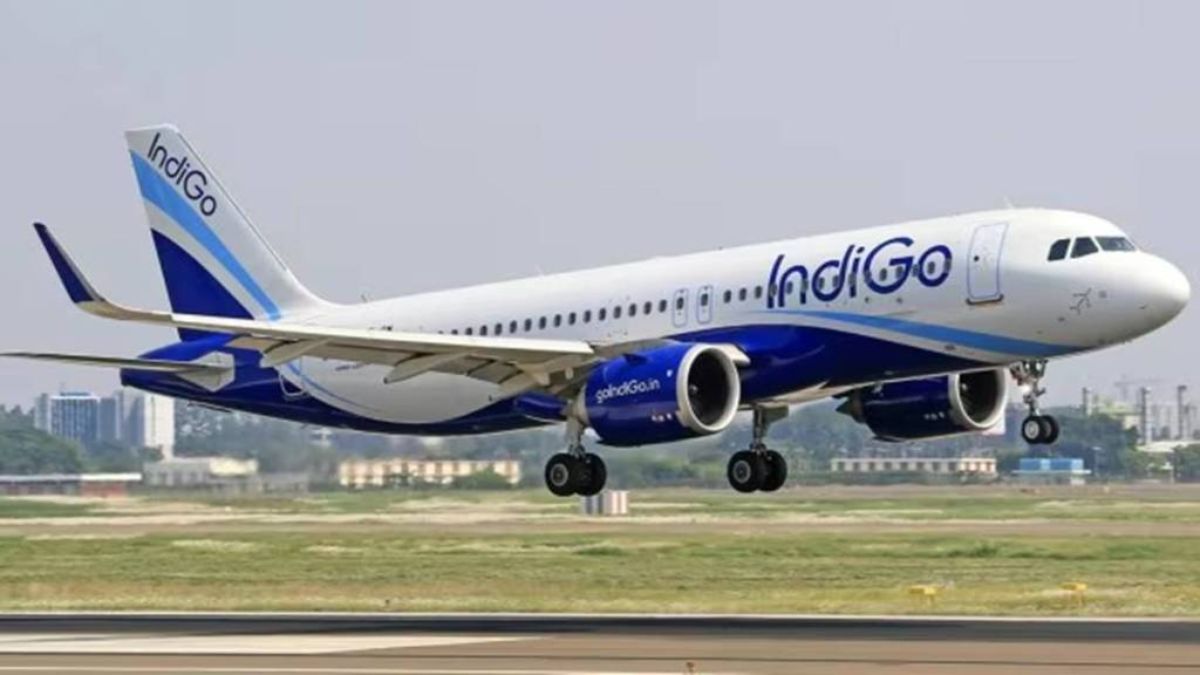Passengers aboard an IndiGo flight from Delhi to Goa experienced a mid-air scare on July 16, when the pilot made an unusual emergency call: “PAN‑PAN-PAN.”
The Airbus A320neo, carrying 191 people, was cruising mid-route when the cockpit crew detected a technical glitch. Rather than raising the dreaded “Mayday” alarm, which signals a life-threatening situation, the pilot used the lesser-known “PAN‑PAN” call.
The flight was then safely diverted to Mumbai, landing without incident just before 10 pm. But what exactly does “PAN‑PAN” mean—and how is it different from “Mayday”? Let’s break it down.
What happened on the Indigo flight?
On the night of July 16, IndiGo flight 6E2091, an Airbus A320neo en route from Delhi to Goa, had to be suddenly diverted mid-air to Mumbai after a technical issue was detected in one of its engines.
According to a Hindustan Times report citing an anonymous official, the pilot issued a “PAN PAN PAN” call to ATC due to a malfunction in engine number 1.
The airline, however, offered a slightly toned-down version of the incident. In a statement, IndiGo said a “technical snag” was the reason behind the diversion. A PTI source added that a full emergency was declared, prompting swift action from air traffic control and ground teams in Mumbai.
IndiGo’s spokesperson confirmed: “A technical snag was detected on flight 6E 2091 while flying from Delhi to Manohar International Airport, Goa on July 16. Following standard procedures, the aircraft was diverted and landed safely at Chhatrapati Shivaji Maharaj International Airport, Mumbai.”
Though the airline did not officially disclose the exact nature of the snag, it stated that the affected aircraft would undergo thorough checks and maintenance before flying again. Meanwhile, a replacement aircraft was arranged to fly passengers onward to Goa.
What is a PAN-PAN call?
“PAN-PAN” might not be as familiar as the dramatic-sounding “Mayday,” but it’s a crucial part of aviation emergency language.
In aviation terminology, a “PAN-PAN” (pronounced pahn-pahn) call is a formal VHF radio distress signal used when a flight crew encounters an urgent problem, but that doesn’t yet pose an immediate threat to the safety of the aircraft or its passengers
The phrase originates from the French word “panne,” meaning a breakdown or mechanical failure. When pilots declare PAN-PAN three times over the radio, it alerts air traffic control and nearby aircraft that the flight is facing a technical or medical issue and requires priority assistance, such as a safe diversion, emergency landing clearance, or coordination with ground support.
Unlike casual communication, a PAN-PAN is part of a structured emergency protocol. Once declared, it puts the flight into a special category, air traffic controllers treat it as high priority, though not at the highest level.
In this recent IndiGo case, issuing a PAN-PAN call meant the situation was serious, but the crew had it under control, allowing them to divert safely to Mumbai.
What is the difference between PAN-PAN and Mayday?
Both “PAN-PAN” and “Mayday” are internationally recognised radio calls used by pilots to communicate emergencies, but the key difference lies in the severity of the situation.
PAN-PAN is used when there’s urgency, think of technical snags, minor medical issues on board, or non-critical malfunctions. These situations require attention and priority, but they don’t immediately endanger the aircraft, crew, or passengers.
On the other hand, Mayday — repeated three times (“Mayday, Mayday, Mayday”) — is a distress signal reserved for grave and imminent danger.
A few examples of mayday situations include engine failure in certain phases of flight, fires, loss of flight controls or aircraft controllability, or pilot incapacitation. A Mayday declaration triggers a full emergency response from air traffic control, airport fire and rescue services, and other aircraft in the vicinity.
A recent example of a Mayday situation includes the Air India Flight AI 171, carrying 242 people, which crashed shortly after taking off from Ahmedabad in June. The pilots transmitted messages such as “no thrust, losing power, unable to lift” and issued a Mayday. Communication then ceased, and the plane tragically crashed near the airport.
With input from agencies


)

)
)
)
)
)
)
)
)



